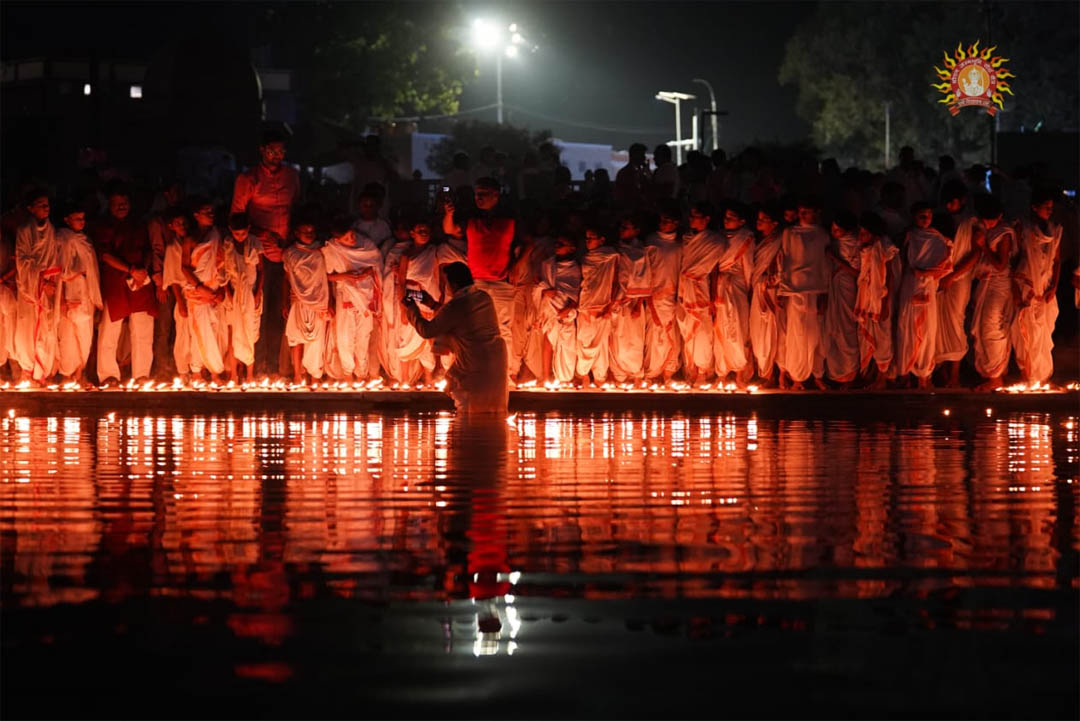
By Vinay Nalwa
As we joyously welcome the divine presence of Sri Ram, Sita, and Laxman into our homes, it is time to light diyas in honor of those who immortalized Sri Ram’s life story. Encouraging the next generation to reading or reciting Valmiki’s Ramayana on this auspicious occasion will not only brings spiritual enlightenment and blessings to them but will help in raise a righteous nation that Bharat was.
In addition to their literary brilliance, through their profound scientific and social insights, the eminent writers of the Ramayana made the message of ideal life/ethos to reach every house of Bharat. The Ramayana has intricately woven and preserved within its verses the subtle and exquisite nuances of the soul, infusing a delicate humanity of temperament that transcends the mere external façade of virtue and conduct. This enduring epic has played a pivotal role in moulding the cultural ethos of India, leaving an indelible mark on the nation’s collective consciousness. As elucidated by Sri Aurobindo, have wielded an influence of immeasurable magnitude in shaping India’s cultural psyche.
Contemporary literature plays a crucial role as a repository, safeguarding a nation’s rich cultural heritage. Among the ancient literary treasures of India, the Ramayana, originally composed by Valmiki, who was a contemporary of Sri Ram, stands as the most influential epic, profoundly shaping Indian culture and values. In the Indian context, epics are revered as records reflecting the thoughts and spirits of our ancestors, guiding us toward a virtuous and meaningful existence. Countless devotees experience a profound connection with Sri Rama when they engage in the act of reading or listening to the Ramayana.
Maharishi Valmiki was also a knowledgeable astronomer. His epic Ramayana is arguably the first historical account of Bharat. Valmiki chronicled events from Sri Rama’s life, transforming them into an epic narrative. He meticulously included astronomical references in his work, indicating the positions of planets, zodiac constellations, and stars during significant events related to Sri Rama. According to Valmiki’s descriptions, Sri Rama was born on January 10, 5114 BC, and he completed his 14 years of exile on January 2, 5075 BC. These astronomical details were corroborated by scholar Pushkar Bhatnagar using advanced software, affirming the authenticity of Valmiki’s accounts.
Maharishi Valmiki’s prominence extends beyond the northern regions of Bharat. In Chennai, there is an ancient temple dedicated to him in Thiruvanmiyur, believed to be the place where Valmiki rested after completing the Ramayana. The temple, over 1300 years old, is a testament to his enduring legacy. Scholars like Dr. Saroj Bala have meticulously verified Valmiki’s astronomical references using planetarium software, confirming the accuracy of the details mentioned in the Ramayana.
Tulsidas, another revered figure, was a Ramanandi Vaishnava saint and poet of great spiritual and intellectual stature. He chose to compose the Ramcharitmanas, a retelling of the Ramayana, in Awadhi, a language accessible to the masses. Tulsidas aimed to bridge the gap between Lord Rama’s life and common people, making his teachings more accessible. His work, including the famous ‘Hanuman Chalisa,’ became immensely popular among people of all castes and creeds, offering hope and courage to the oppressed.
Tulsidas also pioneered the tradition of Ramleela plays, bringing the Ram Charitmanas to life in folk theatre adaptations. Through his writings, Tulsidas reinforced family values, emphasizing purity, simplicity, and self-sacrifice as demonstrated in Lord Rama’s life. His literary contributions continue to inspire and guide society, making him a beacon of moral and spiritual enlightenment.
In the southern region, the most renowned rendition of the Sri Ram story is in Tamil. Undoubtedly “Iramavataram,” titled “The Descent of Ram,” remains legendary. It was penned by Kampan between the 9th and 12th centuries. This adaptation marked a significant milestone as it was the first instance of the story being represented in a language other than Sanskrit or Prakrit in Bharat. Moreover, it stands as the earliest devotional treatment of the life of Sri Ram in the diverse living languages of the country.
In this vast epic comprising over 40,000 lines Sri Ram is Narayan, the supreme reality, and Sri Ram’s unwavering dedication to the supreme virtue, Dharma, took centre stage. Seetha (Sita), his companion, was characterized by her steadfast commitment to chastity and faithfulness. In this life’s story, Rama emerged as a heroic figure, embodying both generosity and ruthlessness. He was perceived as a divine being on a mission to eradicate evil, uphold the good, and liberate all living beings.
In summary, the life of Sri Rama, as depicted in the Ramayana and its various adaptations, embodies ideals of righteousness, purity, and renunciation, providing inspiration to millions of people worldwide. Through the efforts of revered sages like Maharishi Valmiki, Goswami Tulsidas and Kampan these timeless teachings have been preserved and continue to shape the moral fabric of society.
(The writer is a PhD in Sociology. She has co-authored the book ‘Ramjanambhoomi: Truth, Evidence, Faith’)